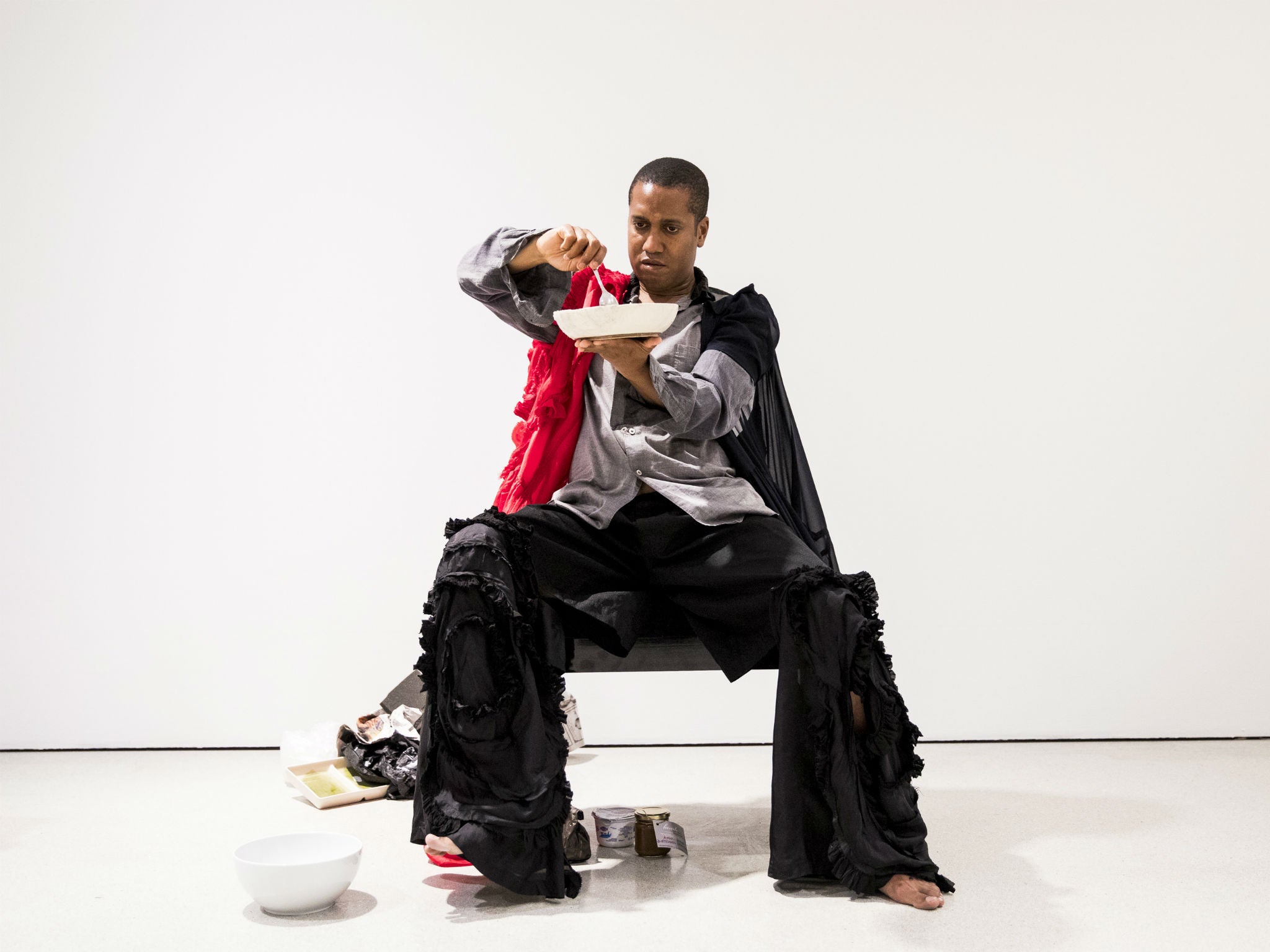Trajal Harrell: Hoochie Koochie, Barbican Art Gallery, London, review: The clash of genres, and expectations, is exhilarating
After a two-year residency at Moma in New York, American artist and choreographer Trajal Harrell comes to the Barbican to showcase 14 works

Catwalk struts, 1960s minimalism, burlesque and butoh: artist and dancer Trajal Harrell’s performance exhibition sets up at a cultural crossroads with paths leading everywhere from peep shows to academia.
Harrell is a New York artist, fascinated and frustrated by the city’s different fashion and dance cultures – when they overlapped, and when they didn’t. The earliest work in this exhibition, It is Thus, shows a dancer moving with the slow, steady minimalism associated with the city’s Judson Church group of the 1960s. The difference was that, where these 1960s avant garde choreographers had had based their “pedestrian” dances on everyday movement, Harrell based his on catwalk moves and the dance style vogueing. The result is understated fabulousness, the big shapes and attitude packed into spare, simple moves.
Caen Amour, the longest work here, has fun with the overlap between performance and concept art. It starts with Harrell himself, in bright top and leggings with a dark sarong, dancing on a club stage. His steps range from club dance to catwalk to burlesque; he’ll play to one audience member, or turn his back on all of us. One woman in the audience starts to sing, then gets up to explain the rules of the rest of the show, and makes sure that we’ve read our programme notes.
Harrell and his three dancers pose and strut, while backstage they change costumes, tidy up and try out looks that may or may not make it to the stage. It’s a performance of a performance: they hold costumes in front of themselves rather than wearing them. It looks back to the “exotic” dancers of the late 19th and early 20th century, both orientalist fantasy and an early development in modern dance. Even in this modern reimagining, the only female dancer is the one who gets stuck with the cleaning.
Harrell’s clash of genres, and expectations, is exhilarating. The weight of concept and context doesn’t always carry over into the performance – you do need those show notes – but he and his dancers have challenging presence, carving out space for themselves as they flit around the gallery.
Harrell’s own ritualistic solo The Return of La Argentina refers to the intensity of Japanese butoh. He stops to eat, explaining that “usually it goes better” if he eats these precisely chosen items, then bounces his spoon on his bowl. Teetering and fluttering, he puts on parts of costume, and makes a grand exit full of coy, comic waving. His whole audience smiles and waves back, drawn into the process of his performance.
Join our commenting forum
Join thought-provoking conversations, follow other Independent readers and see their replies
Comments
Bookmark popover
Removed from bookmarks